With remote and hybrid work models firmly embedded in the way we do business, organizations are actively investing in tools and infrastructure to ensure optimal experiences for their distributed teams.
The complexity brought about by the way we work today means that optimal experience has never been more important.
Find out how we can help you enhance your customers' digital experience
Read our guide to Digital Experience Management
Why you need end-to-end testing
Everyone has experienced frustrating downtime, and loss of momentum and productivity due to malfunctioning software, network glitches, incompatible devices, sub-par video and audio quality.
With multiple components comprising a unified communications environment, end to end testing is not only essential - but without a strategic testing process, and the tools to do it, your software applications are at risk of becoming unstable, unreliable, and unusable.
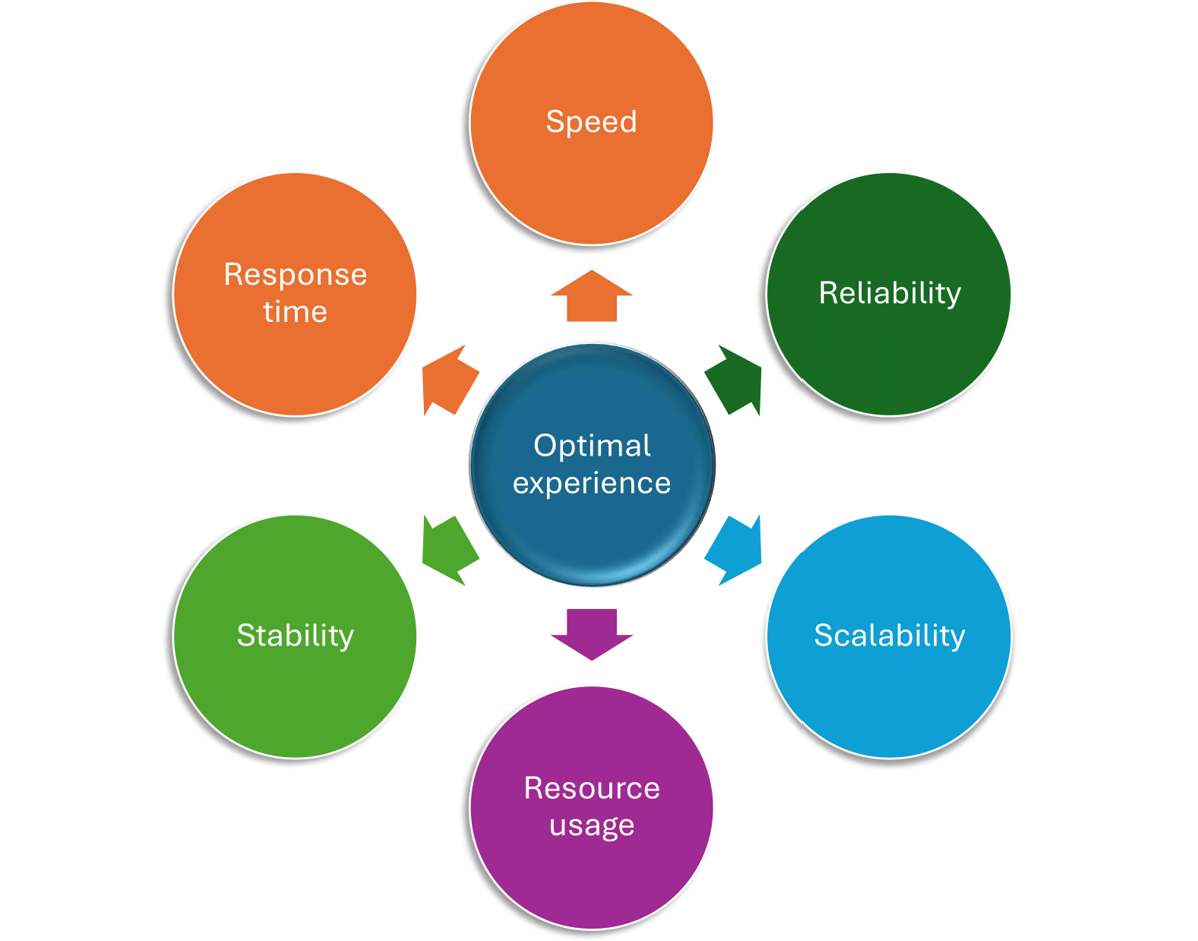
In this guide, we'll cover what end-to-end (E2E) testing is, and why it's a crucial element of your IT processes.
We'll also highlight how our newest solution, RemoteInsight is a revolution in all-inclusive remote workforce experience management.
Find out how RemoteInsight can solve experience problems for all users
What is End-to-End Software Testing?
End-to-end testing, sometimes referred to as E2E testing, is a vital part of Digital Experience Management.
It's a form of manual software testing that focuses on how efficiently a software application functions from beginning to end, by simulating how an end-user would use the application
Unlike unit tests and integration tests, end-to-end testing is usually performed less frequently, and tests how well components, processes, and interactions all function together in a given workflow.
The aim of E2E testing is to identify glitches and bugs that can occur when multiple system components like the user interface, database, and application server are integrated. End-to-end tests are about simulating real world scenarios to ensure that from the end-user's perspective, an application delivers what's expected as a unified body.
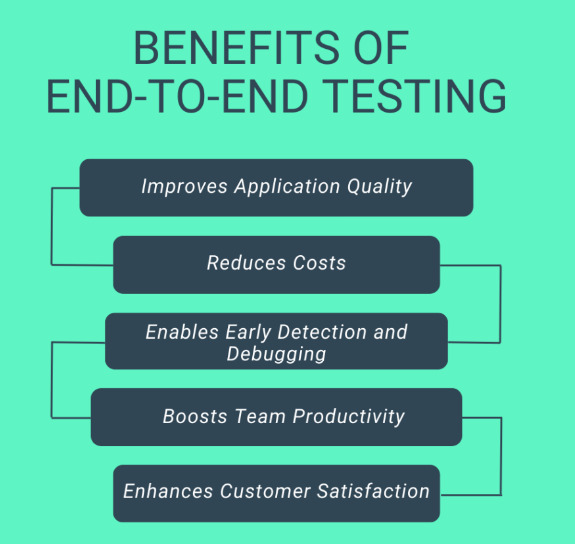
Learn how to get more from your systems and applications in our guide
Definitive guide to Performance Testing
How End-to-End Testing works
During E2E testing, the testers will open the software in a specialized browser, and conduct testing on components through interaction to check hardware and all other components such as:
-
Application programming interfaces (APIs)
-
Network
-
Codebase
-
Servers
-
Browser compatibility
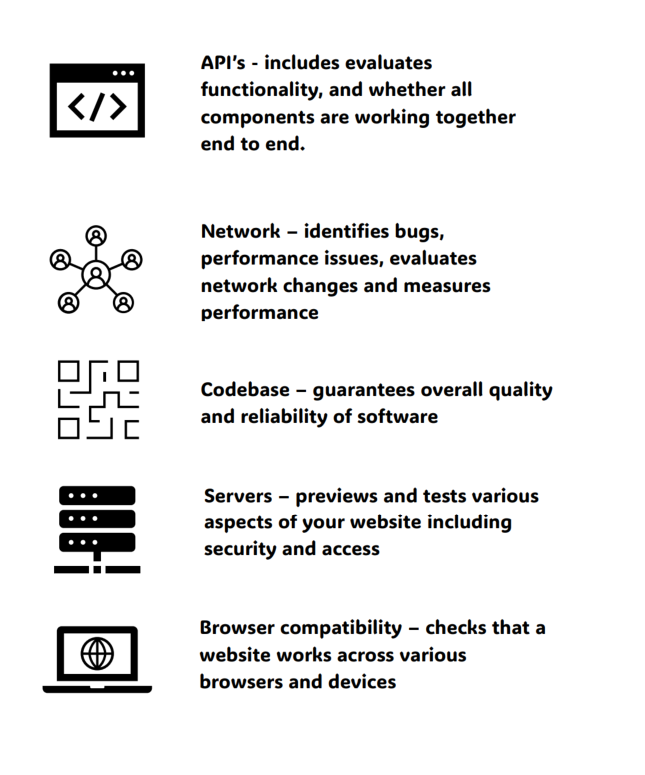
What is a Testing Pyramid?
A software testing pyramid is a framework that shows testing methods to help both developers and Quality Assurance teams build better quality software. It describes the test types that the development and QA teams should incorporate in an automated test environment, as well as the order and frequency of these tests.
A test pyramid ensures that code changes don't affect existing functionality. Additionally, it helps developers determine more quickly if an update they made affects the code, and helps in creating a more robust test suite.

Image source: CircleCi
-
Integration testing and end-to-end testing have some similarities, but there are a few major differences:
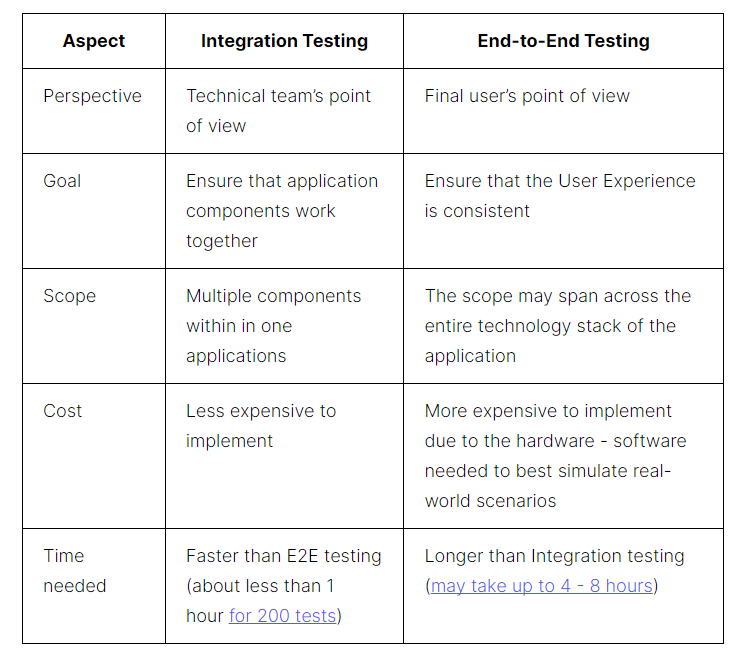
-
The differences between end-to-end tests and unit testing. While end-to-end testing tests both software and connected systems end to end, as opposed to the process of testing individual components.

End-to-end tests give testing teams valuable insights into how an application functions and provide a more comprehensive understanding of software quality.
Individual components may function well, but they could still develop faults when integrated due to failed communication between components.
What is test coverage?
Test coverage is an important part of the end-to-end testing process. Test Coverage measures the amount of automation testing performed by a set of test suites.
Using test automation tools, it helps monitor the quality of testing and helps QA teams create tests that cover all the untested missing areas.
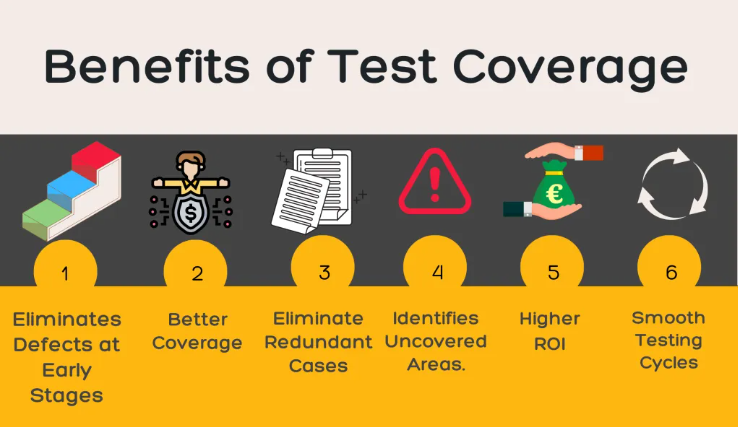
Image source: Artoftesting
In order to conduct test cases that represent all the ways that real users would interact with an application, a lot of test coverage would be required. The process would take a huge amount of time and effort, and the results are likely to be costly.
However, not enough coverage can give testing teams a false sense of security, thinking an application is well-tested when it isn't.
System testing validates and verifies the flow of information through the Application Under Test (AUT), including all possible paths and dependencies, so that testers can easily pinpoint the root cause and troubleshoot issues between software components and subsystems.
Manual testing vs automated testing
End-to-end testing is a software testing technique most commonly conducted manually, as it can be difficult to automate some interfaces.
Although manual testing may not always be as accurate as automated tests, manual tests give testers more flexibility in the testing environment.
Automated testing is fundamentally useful for repeated cases, meaning that the same code and scripts can be leveraged each time.
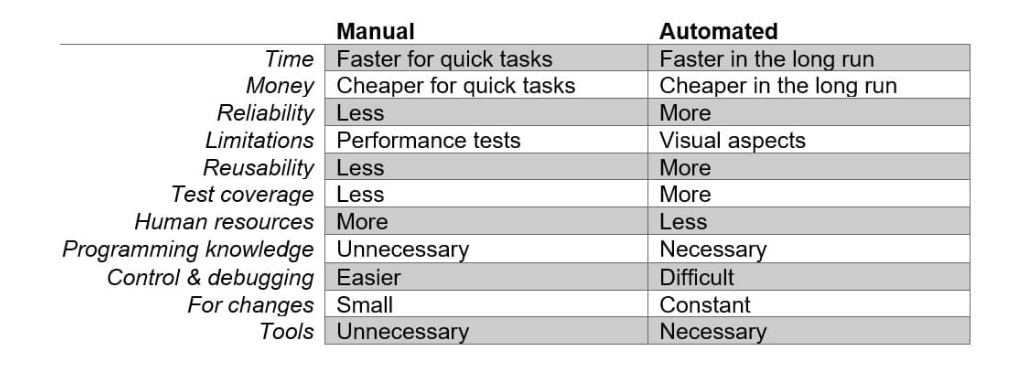
Image source: Triare
Types of manual Testing
There are two main types of E2E testing:
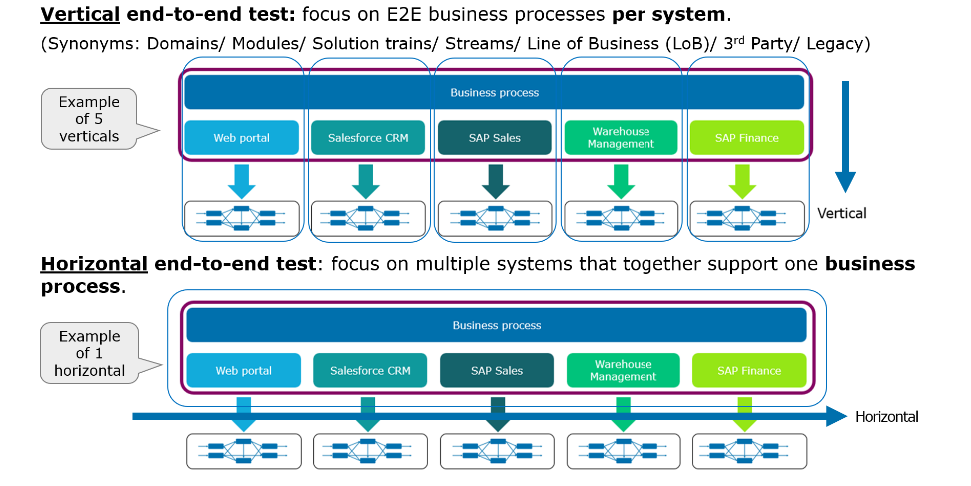
Image source: Tmap
Horizontal End-to-End testing
Horizontal end-to-end testing is the one that most impacts the user, as it independently evaluates applications across an entire workflow.
Horizontal end-to-end testing is thorough, wide-reaching and user-friendly, providing an exact picture of actual user experience within the test environment. It also tests the software for interactivity with other applications, target databases and network infrastructure.
Vertical End-to-End testing
Vertical end-to-end testing is more of a technical process, where application layer components are tested independently in hierarchical order, for example API tests and UI database calls.
Vertical testing is more granular, and is used when safety is crucial and code coverage is broad. The testing process may be faster than with horizontal testing.
The primary difference between these two types of end-to-end testing is horizontal tests can be carried out more independently, while vertical testing involves collaborating with other stakeholders, such as potential product owners
Differences between end-to-end testing and system testing

End-to-End testing lifecycle & activities
There are four primary components to an E2E testing lifecyle. Test planning, test design, test execution, and results analysis.
Test Planning
As with any type of planning, it's important for development and testing teams to outline objectives based on client requirements and application architecture to ensure that everyone is on the same page.
This way, all stakeholders have the necessary information relating to the testing roadmap, with a comprehensive understanding of the testing resources, test approaches, strategies, and objectives.
Test Design
Based on agreed-upon requirements in the planning stage, a proper test environment is set up.
The test design phase also involves risk analysis and usage analysis so that the necessary resources are allocated to achieve test objectives. After that, testers start creating the necessary test cases, utilizing automation testing tools which lessen the time spent on actual test design.
Test Execution
This phase involves testing locally and remotely, and test progress is monitored for consistency with the original test plan.
Results Analysis
Test data is analyzed to pinpoint the root cause of the bug.
Results are shared with the development team for immediate action. Then process evaluation is conducted to see where improvements can be implemented.
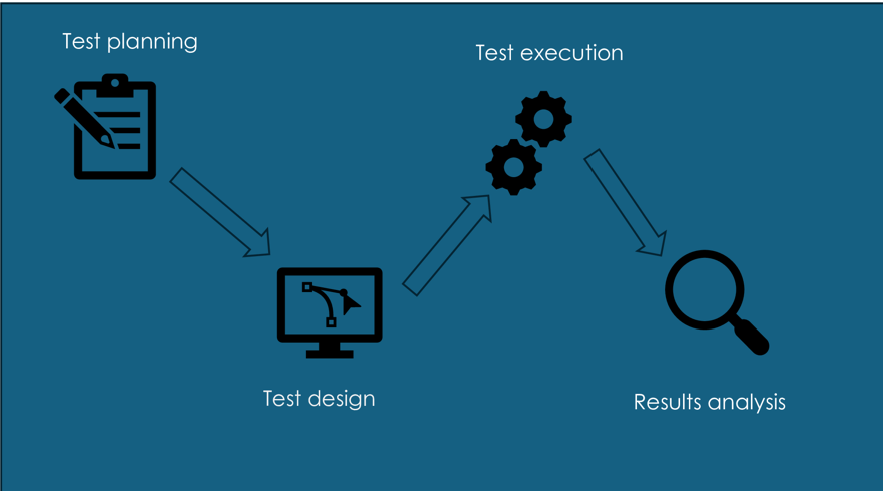
Benefits of End-to-End Testing
By implementing a comprehensive software testing approach, you can verify all the building blocks that make up your entire system, including all software and applications.
End-to-end testing verifies the core functionality and every backend layer of an application or software system, as well as the interaction between all the individual tiers in the architecture. This has so many benefits, including the development and delivery of high-quality software, which results in a more consistent user journey.
Some of the main benefits of end-to-end testing include:
Sub-system testing to ensure compatibility
End-to-end testing ensures all sub-system components such as networks, internal (and external) databases, and third-party integrations work perfectly in isolation as well as in association with other components.
Comprehensive testing coverage for better outcomes
An IT stack is made up of complex software applications and sub-systems that require comprehensive testing coverage. An end-to-end testing tool tests the entire application, both at the API and UI levels, using automated and manual testing practices to uncover bugs.
Earlier bug detection
End-to-end testing allows bug detection and issues faster, as well as earlier in the development cycle, reducing the chance of bugs making their way further into the testing or production process.
Longevity and success of software applications
A small failure in just one element of a sub-system can destroy the entire system's performance, functionality and stability.
End-to-end testing helps maintain the stability of all individual components. Deploying different testing methods, such as unit or functional testing across the application lifecycle together with end-to-end testing helps create additional test cases that might have otherwise been missed.
Ensures application health
E2E tests validate performance at every level, ensuring the health of your entire software application. The practice of continuously testing from frontend to backend and across multiple sub-systems is a comprehensive testing approach that provides a valuable perspective on software performance across every environment.
7 End-to-End Testing best practices
eCreating a test case preparation status with a well-planned and focused approach could include some of these best practices:
-
Have a clear vision of how the software system or application is supposed to function across every level, then create a test environment that aligns with all requirements.
-
For successful end-to-end test results, list all the methods, tools, and approaches you plan to carry out including clear and detailed descriptions of standards for each test.
-
Workflows are important in end-to-end testing, so E2E test scenarios must run in a specific sequence, with workflows matching the path users would take through your application.
-
End-to-end testing should include multiple test cases to test every software functionality, with at least one test case assigned for every condition.
-
List, catalog and prioritize all the defects uncovered during test cases based on how severe or critical they are. This helps resolve critical bugs early, while improving the quality, availability and performance of your software systems.
-
Tracking and monitoring the progress of end-to-end testing is vital during the software development process to ensure that you create the right test cases to test every feature. This is invaluable for discovering gaps and challenges in your testing processes.
-
When creating test cases for end-to-end testing, it makes sense to test as though you were the actual user, by adopting the mindset of someone using the app for the first time
How IR RemoteInsight can help
There is increasing complexity in unified communications systems today, so it's vital that you regularly conduct end-to-end testing and performance testing on your software systems and technology tools - or risk downtime and even complete system failure.
Read our comprehensive guide to performance testing
As an integral part of the Collaborate suite, our newest product RemoteInsight delivers unparalleled end-to-end observability for remote locations, enabling organizations to proactively address performance issues and enhance employee and customer experiences.
Going beyond traditional approaches, RemoteInsight not only detects problems but also identifies root causes, troubleshoots faults, and provides resolutions.
With UCC environments prone to regular change, like ongoing software and systems upgrades, additions and improvements, system testing, and end-to-end testing is more important than ever.
The worldwide evolution of unified communications underscores the need for performance testing tools and performance monitoring to report when changes affect the overall experience for users and customers.
Any organization's UC and contact center system always depends on peak performance. Testing processes such as end-to-end testing and performance testing considers all performance acceptance criteria, input and output data, benchmarks and standards.
Find out all you need to know about remote workforce experience management in our Webinar





